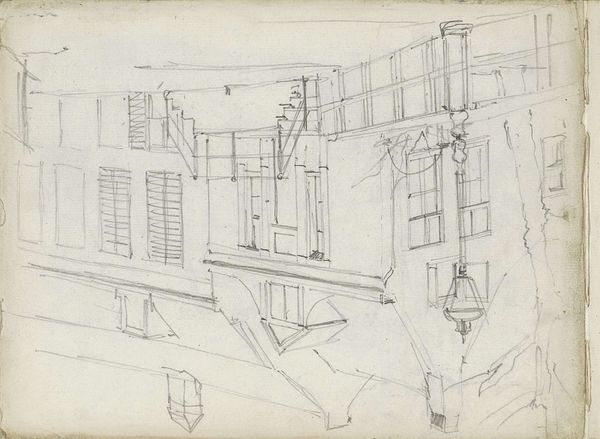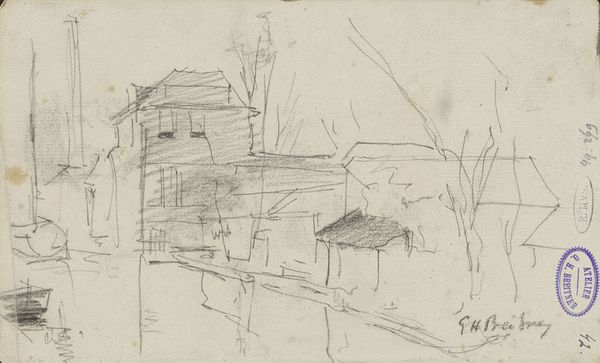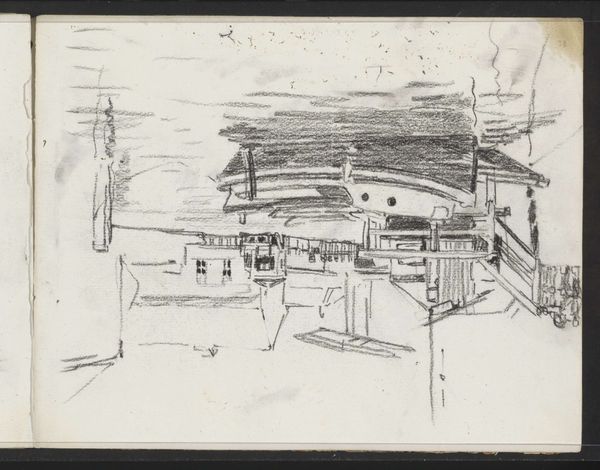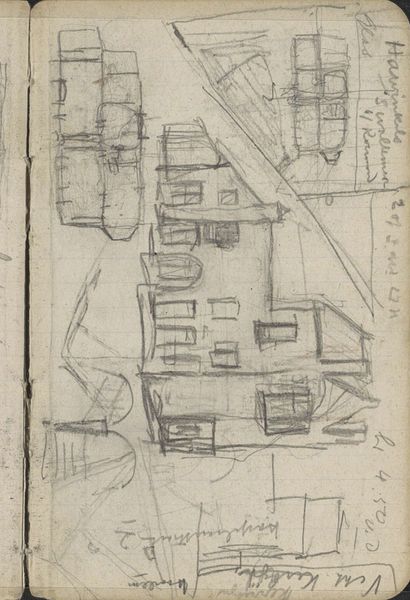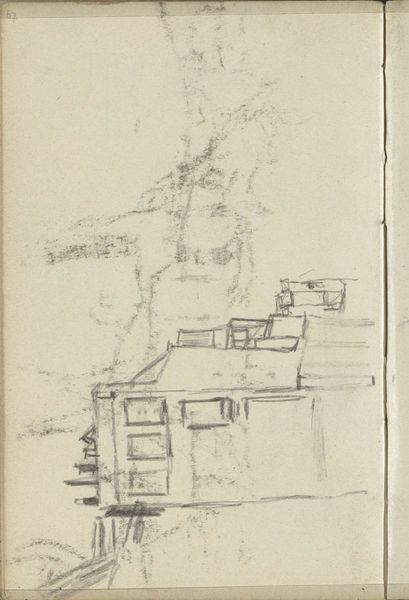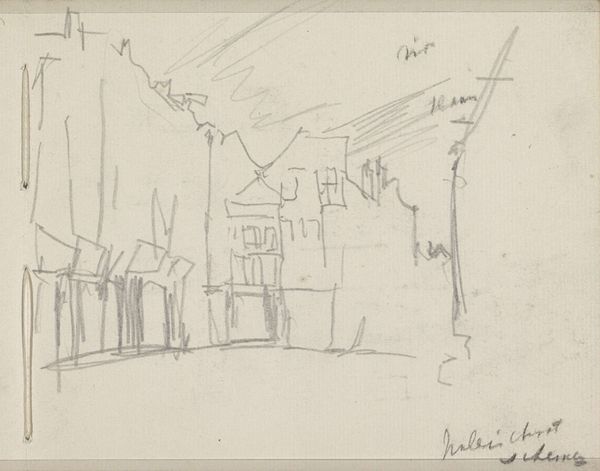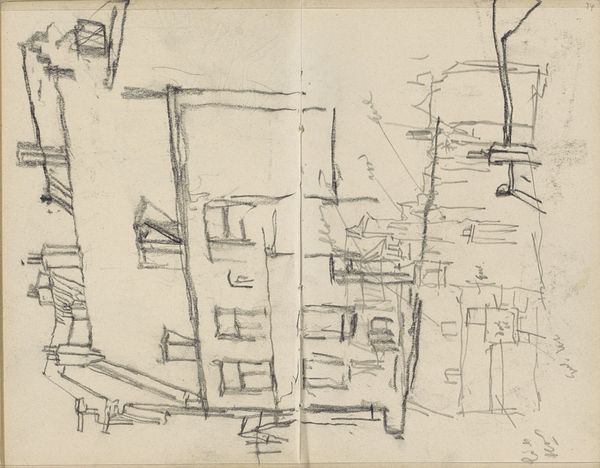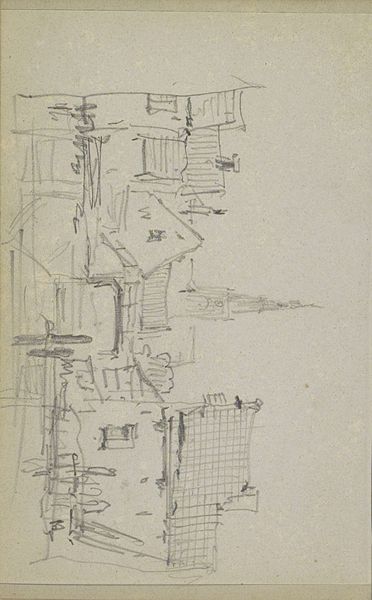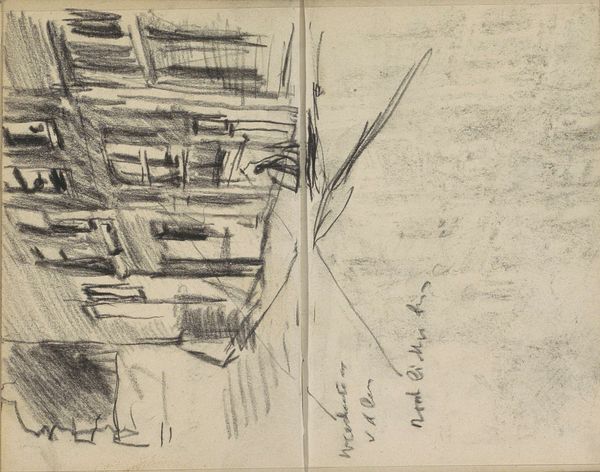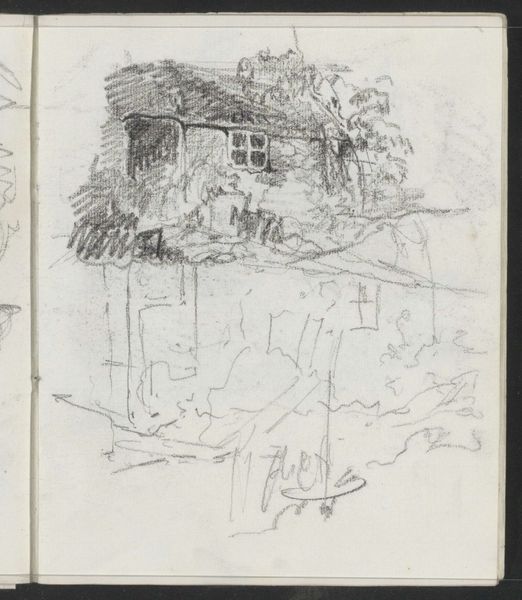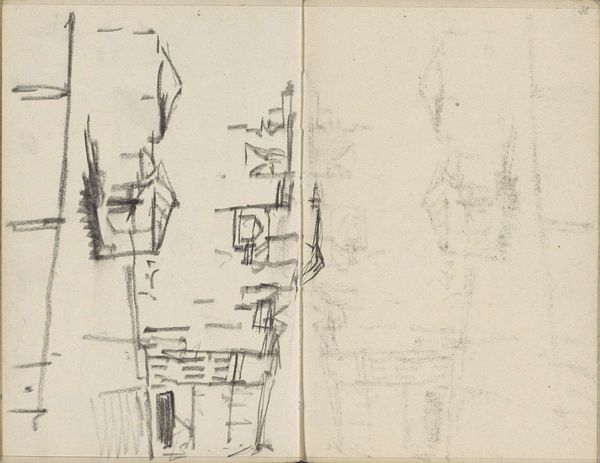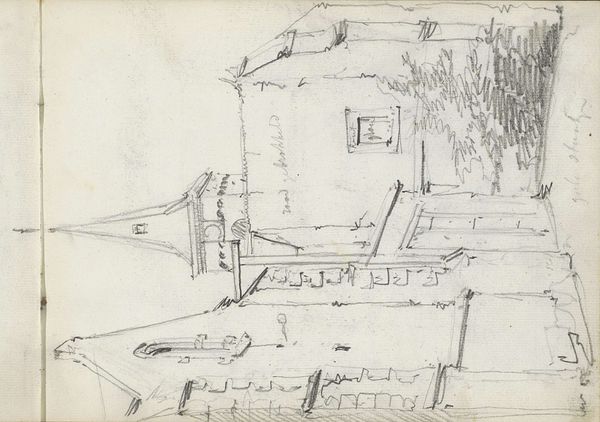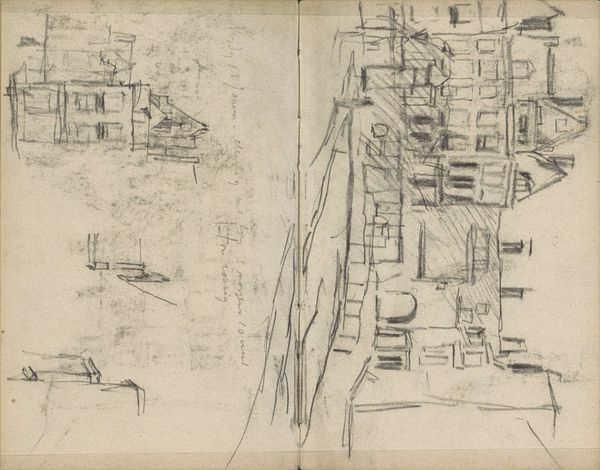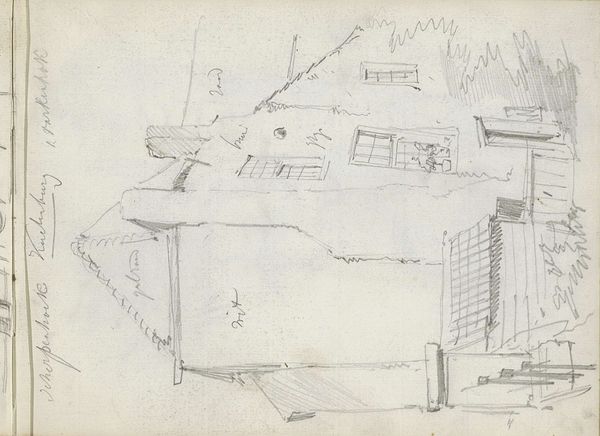
#
architectural sketch
#
quirky sketch
#
sketch book
#
incomplete sketchy
#
personal sketchbook
#
sketchwork
#
pen-ink sketch
#
architecture drawing
#
storyboard and sketchbook work
#
initial sketch
Copyright: Rijks Museum: Open Domain
Curator: We’re looking at "Huizen," a sketch by Willem Koekkoek, created sometime between 1849 and 1895. It's currently held in the collection of the Rijksmuseum. Editor: It feels immediate, almost ephemeral. The sketchwork, in pen and ink I presume, captures not so much the concrete reality of the buildings, but rather an impression, a fleeting moment. The architectural drawing is quite delicate. Curator: Indeed, the composition relies heavily on line, the density and direction to convey form. Notice the use of hatching to define the shaded areas, the economy of line suggests a provisional state, a study perhaps? It emphasizes the rudimentary forms inherent within this environment. Editor: What interests me, beyond the aesthetic impression, is how this sketch offers insight into Koekkoek's practice. It’s quite informal isn’t it? Almost like a preliminary stage. These raw materials reveal a method that goes beyond mere depiction. One can almost envision Koekkoek physically engaging with his subject. Curator: I find the spatial relationships fascinating. There’s a definite ambiguity, a deliberate flattening of planes. Note, if you will, how this manipulation disrupts our traditional understanding of perspective. This destabilization compels us to reconsider how we perceive these forms and the logic of space itself. Editor: And beyond disrupting spatial perception, it prompts thoughts about the labor involved, right? The time, the effort required not just in this single sketch but the numerous similar preparatory pieces an artist creates before embarking on, say, a finished oil painting? There’s inherent value in these transient studies. Curator: The architectural qualities presented become a starting point, where lines define volume not only spatially, but emotionally. The material reality of the buildings begins to evaporate under the force of these emotive decisions. This drawing seems, as such, more about the act of drawing itself. Editor: Precisely! By focusing on these process-oriented drawings, we uncover artistic practices—the unseen labour and decision-making processes which contributed to creating "finished" works. It challenges a high/low art boundary through material trace and social history. Curator: That tension of line, material, and subject renders this sketch particularly striking. Editor: Yes, there is something genuinely fascinating in recognizing the importance of initial sketches.
Comments
No comments
Be the first to comment and join the conversation on the ultimate creative platform.
